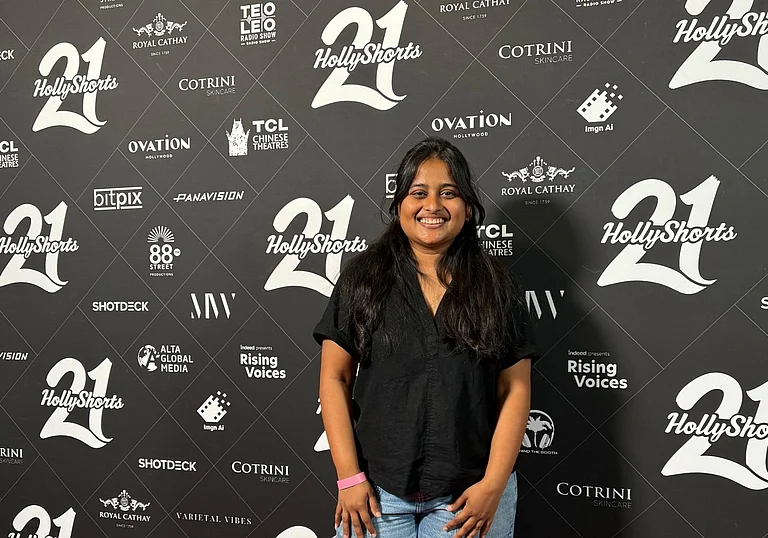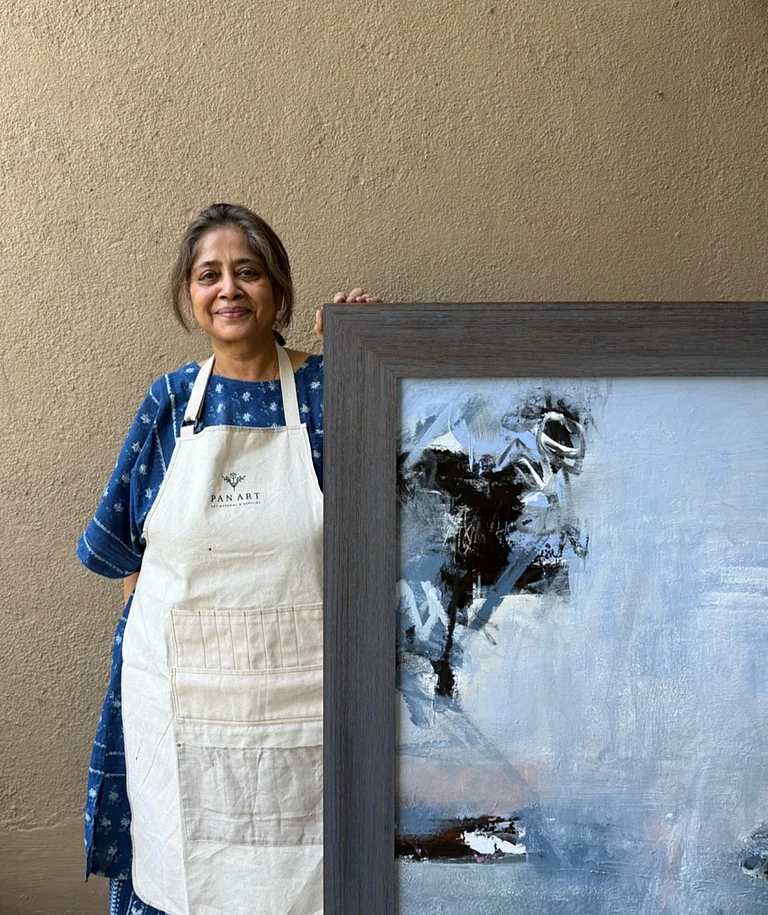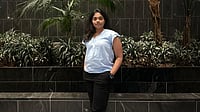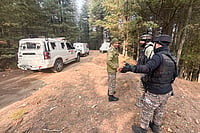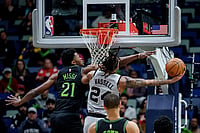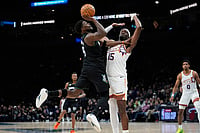In a rare confluence of art and literature, internationally acclaimed contemporary artist Mukesh Sharma has collaborated with celebrated author Salman Rushdie for the French edition of Shalimar the Clown, published by Gallimard. Known for his evocative installations and use of discarded materials, Sharma’s practice bridges the worlds of tradition and modernity, local memory and global narratives. In this conversation, he reflects on his evolution as an artist, the environmental urgency embedded in his work, and his recent creative collaborations.
1. From your early training in printmaking at Baroda to large-scale installations and now an international collaboration with Salman Rushdie — could you take us through your evolution as an artist and what has shaped your creative voice over the years?
My creative journey is deeply rooted in my childhood memories of Doroli, my village nestled in the lap of the Aravallis in the Alwar district of northwestern Rajasthan. Doroli is known for its stone quarries, traditional crafts, heritage, and agriculture. My ancestors were architects and stone carvers who specialized in intricate stone jaali work and contributed to the construction of havelis for local jagirdars and princely families. My father worked in farming, mining, and small-scale mechanical work involving lathe machines. After my grandfather, I’m the only one in my family who has made art the center of my life.
My artistic journey began in Jaipur, where I explored miniature and mural painting, traditional stone carving, and printmaking at the Rajasthan School of Art. To gain technical mastery, I pursued my MFA in Printmaking at MS University, Baroda. It was there that I began to experiment with forms, materials, and processes—pushing beyond conventional boundaries.
Growing up in a village surrounded by traditional crafts and heritage deeply influenced my creative voice. Over time, my practice evolved from two-dimensional surfaces to immersive spatial experiences that engage with site, narrative, and sensory dialogue. The collision between tradition and disruption defines my process. I am drawn to the “in-between space” where transformation occurs—where boundaries, both physical and conceptual, begin to dissolve.
2. Much of your work deals with modernization, consumerism, and environmental fragility. How do you see the role of artists in addressing these urgent issues?
Art has the power to question and reimagine our understanding of social, political, psychological, and environmental realities. I often use discarded electronics—especially computer keyboard keys—as my primary medium. These materials embody the unseen afterlife of consumer culture and highlight our growing environmental concerns.
Through these works, I construct a kind of void that stretches across time—embedding fragility within the very structure of the artwork. Whether through painted or found keys, the intention is to spark reflection and dialogue about our collective patterns of consumption and waste.
3. You’ve exhibited internationally across Venice, Paris, New York, and Sydney. How has the global audience responded to your reinterpretations of Indian traditions and stories?
There is a growing curiosity internationally about what I call “the new Indian-ness”—a space where complex modernity and tradition intersect. My work draws upon Indian philosophy, mythology, and cultural memory, while simultaneously engaging with contemporary media and global visual languages.
This creates a visual hybridity that resonates with international audiences. They are intrigued by the cultural context of my stories, but also relate to the shared human experiences of struggle, transformation, and resilience. My art speaks of people from my village, my state, and my country—yet their stories find universal echoes.

4. How did the collaboration with Salman Rushdie for the French edition of Shalimar the Clown come about? Do you see this collaboration as opening a new dialogue between literature and visual art?
One day, I received a message on social media from Gallimard, Salman Rushdie’s French publisher in Paris. They mentioned that Rushdie had seen my work, admired it, and wanted to collaborate on the French edition of Shalimar the Clown.
At first, I assumed it was spam and ignored it. But when the second message came, something felt genuine—so I replied. What began as a simple exchange turned into long conversations, email exchanges, and eventually a formal agreement. That’s how my collection Revitalizing Memories became part of this incredible project.
We didn’t just talk about art; we connected over ideas and emotions—what it means to tell a story through different mediums. It wasn’t about translating language, but translating feeling. This collaboration opened a beautiful dialogue between literature and visual art, showing how both can speak to each other in unexpected ways.
5. Works like Nagraj at the Venice Architecture Biennale and PK – Man & Superman at the India Art Fair showcase your interest in large-scale, immersive art. How do you approach these projects differently from paintings or prints?
Large-scale installations engage the senses—sight, sound, light, and texture—inviting viewers to enter and experience the work. They are spaces for thought rather than static objects. These projects extend my printmaking and painting practice into sculptural and site-specific dimensions.
In Nagraj, I explored the mythological nine-headed serpent through a 7-foot-high sculptural form with a 180-foot tail, built using repurposed computer keyboards, metal, wires, Sanganeri silkscreen patterns, silk, nylon nets, and pigments. The work reflects the tension between traditional craft and contemporary technology.
In PK – Man & Superman, a circular 7-foot-high structure, I examined how pop culture mirrors socio-political realities through the lens of the superhero. Both works push my practice beyond surfaces—towards creating environments that provoke new ways of thinking about art.
6. You often use discarded materials like keyboards, industrial paint, and e-waste in your work. What do these materials symbolize in your artistic narrative?
Discarded keyboards and keys represent silences and stories pushed to the margins by consumerist culture. By transforming them, I try to sanctify these abandoned objects—turning them into carriers of memory and consciousness. My art is about acceptance and renewal, giving new life and voice to what has been forgotten.
7. Looking ahead, are there new collaborations or projects across literature, design, or other disciplines that you’re particularly excited about?
Currently, I’m preparing for an upcoming group show at IGNCA. My sculptural installation for the exhibition will depict a river made entirely of computer keyboards and keys, drawing parallels between rivers as dumping grounds for industrial waste and the obsolescence of technology. These same keys, once used to write about such issues, eventually become part of the very waste they describe.
I’m also planning collaborations with traditional screen printers from Sanganer to integrate their motifs and printing techniques into my paintings. Additionally, I’m working with stone carvers from my village—including some of my relatives—on a new series of sculptures. All of this is building toward a major solo exhibition at Bikaner House next year, where I’ll present an entirely new body of work.
About the Artist
Mukesh Sharma is an internationally recognized contemporary artist based in New Delhi, whose practice encompasses painting, printmaking, and installations. With an MFA in Printmaking from MS University, Baroda (1998) and a BFA in Painting from the Rajasthan School of Art, Jaipur (1996), Mukesh’s work explores themes of modernization, environmental impact, socio-political dynamics, and cultural displacement.









